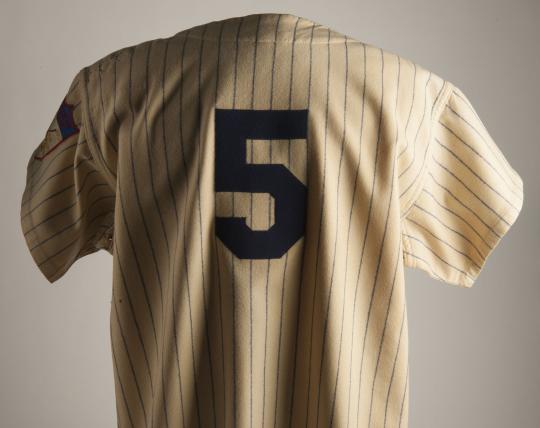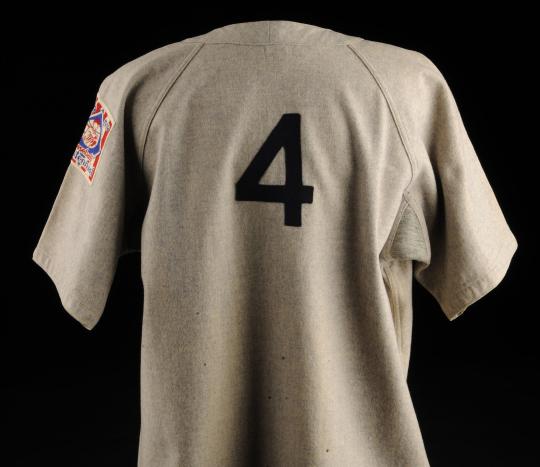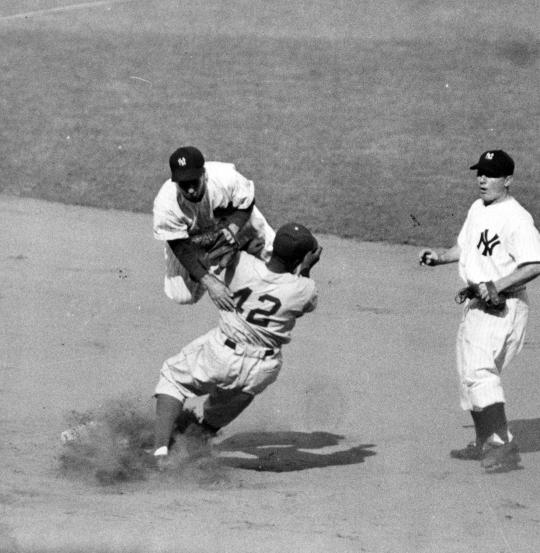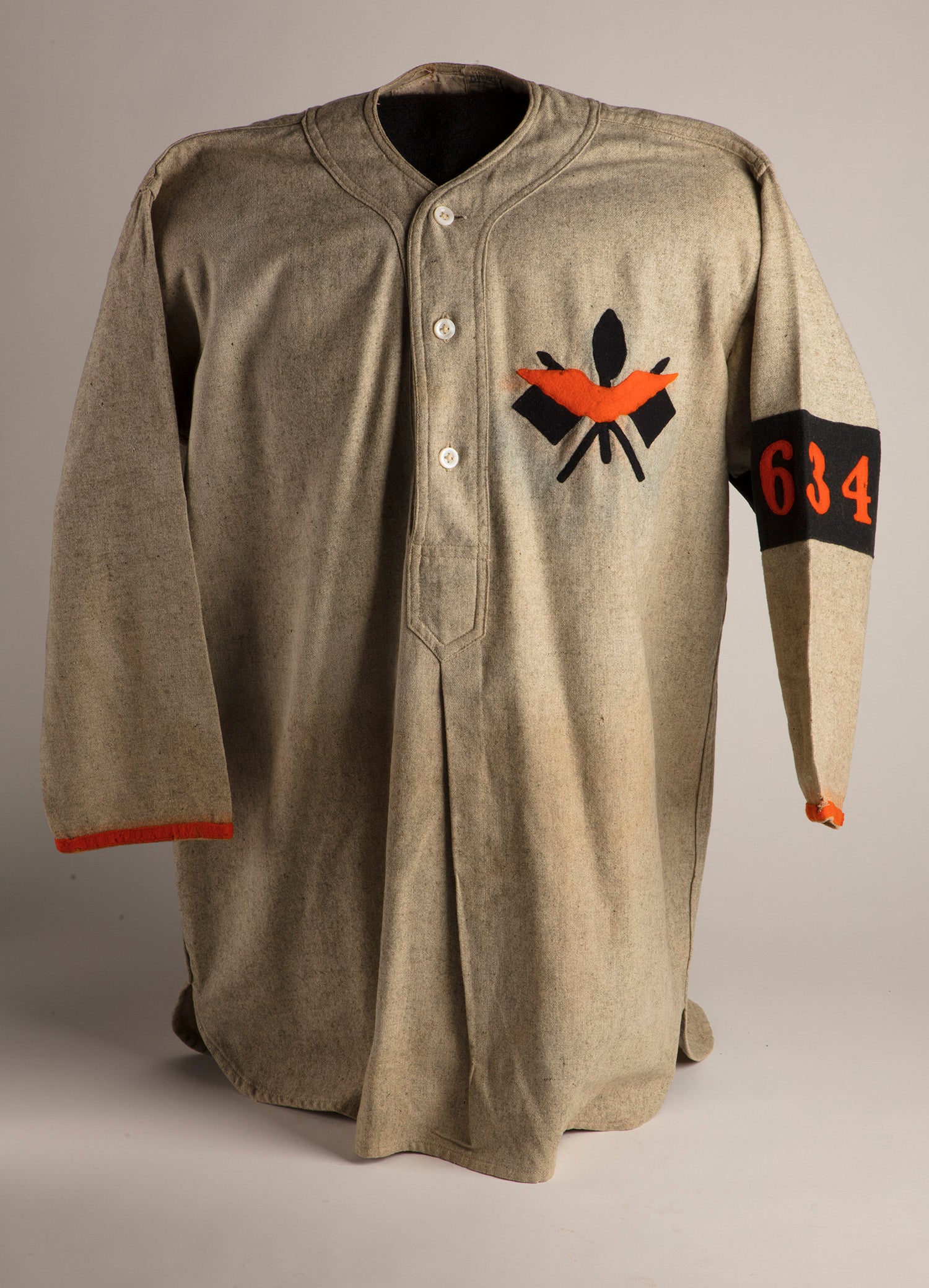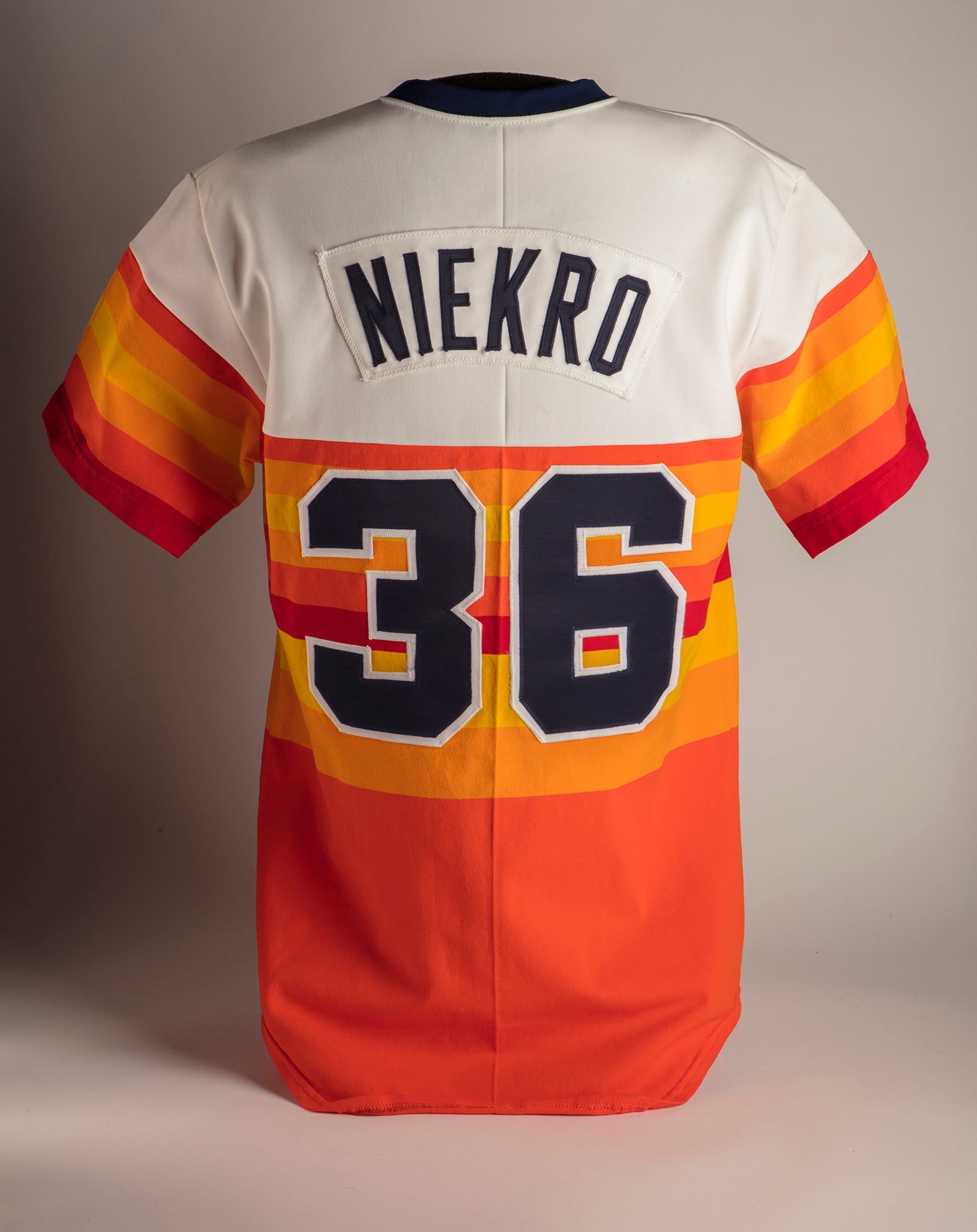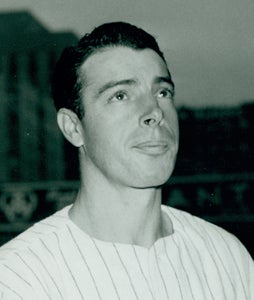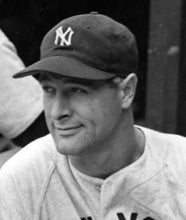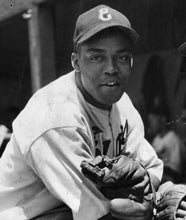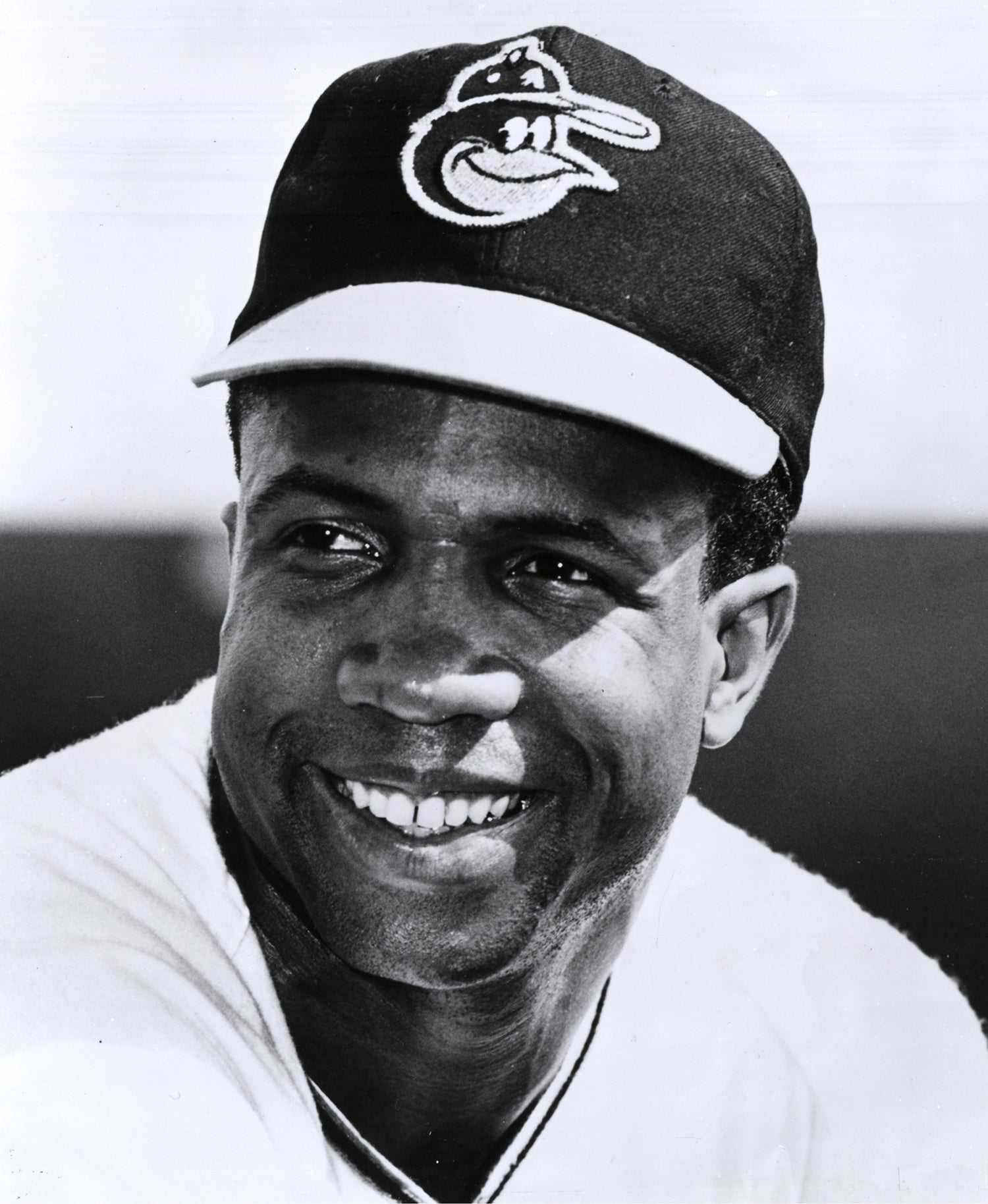- Home
- Our Stories
- History of retired numbers dates back to Lou Gehrig Day
History of retired numbers dates back to Lou Gehrig Day
Take it from a man who laundered six home versions of them – and an untold number of visiting ones – there is nothing quite like a retired jersey number.
“It's the fans’ way, the franchise's way, of saying ‘We love you,’” said former longtime San Francisco Giants clubhouse manager Mike Murphy.
Official Hall of Fame Merchandise
Hall of Fame Members receive 10% off and FREE standard shipping on all Hall of Fame online store purchases.
Hall of Fame Membership
There is no simpler, and more essential, way to demonstrate your support than to sign on as a Museum Member.
He's right, of course. Election to the National Baseball Hall of Fame is baseball's highest honor, but it is largely determined by the worthiness of the honoree's numbers.
But the number – singular – is where honor goes to hang in forever glory in the honoree's home ballpark.
“Look at that, good kid, I made it, 'Top of the World,' ” the late No. 20, 91-year-old Monte Irvin, told Murphy, who was the “good kid” that Monte first called him when they met in 1962 – and called him that again on the day the Giants retired Irvin's number in 2010.
Irvin’s “20” is baseball’s most frequently retired number at 11 times. Baltimore’s Frank Robinson was first (Spring Training 1972) – barely beating out Pittsburgh’s Pie Traynor (Opening Day, 1972) – and also the most recent (2017, Cleveland, where he was baseball’s first African-American manager). In between, Robinson’s number was retired in 1998 (Cincinnati).
The other 20s include Luis Gonzalez (Arizona), Frank White (Kansas City), Don Sutton (Los Angeles Dodgers), Jorge Posada (New York Yankees), Mike Schmidt (Philadelphia), Lou Brock (St. Louis) and Irvin.
Back in the day, Willie Mays would order – by the bushel-load – the most famous No. 24 jersey of them all, and trade them for the No. 24 uniforms of visiting players, even offering to buy the number right off their backs for $1,000 apiece.
Mays inspired at least two generations of young ballplayers, especially those who fancied themselves as center fielders, to wear the double dozen. Ken Griffey Jr. is the "24" today's players often emulate. The tradition lives on.
“Somewhere, Willie has a closet full of those 24s,” said Murphy, chuckling at the memory.
“Players like their numbers,” he added. “You (used to) see players wear the numbers on a chain around their neck, fans with the numbers on their back. There's just something about baseball numbers. The number becomes who that player is to the fans and is forever associated with him.”
Most baseball fans know that the first baseball number retired was Lou Gehrig's No. 4, on July 4, 1939, the day of his famous “luckiest man on the face of this earth” speech. But only the seam-iest of seamheads know – heck, not even many Cincinnati Reds fans know – that the second baseball number retired was that of former Reds catcher Willard Hershberger, who committed suicide during the Reds’ World Championship season of 1940. His No. 5 has since been overshadowed by the one worn by legendary catcher Johnny Bench.
The third number retired was that of New York Giant Carl “The Meal Ticket” Hubbell, No. 11, in 1944. Next, The Bambino, Babe Ruth, No. 3, in 1948, and fifth, fellow Yankee Joe DiMaggio, No. 5, in 1952, the Opening Day after he retired.
So revered and evocative are retired numbers that the National Baseball Hall of Fame often makes them the centerpiece of their displays. There may be, arguably, no more iconic non-action baseball “number” photo than the Bambino in No. 3 leaning on his bat at Babe Ruth Day at Yankee Stadium in 1948 on the day the Yankees retired his number. The Hall has that No. 3, two Gehrig No. 4’s (both from the 1939 season), a DiMaggio-delivered No. 5 in 1952 and a Mickey Mantle No. 7 that was donated to the Hall after his final season in 1968.
“The uniform collecting market has long been driven by the Yankees,” said Dave Grob, a uniform authenticator born and bred in Cincinnati who has quite a collection himself. “The Mount Rushmore would be Ruth, Gehrig, DiMaggio and Mantle.”
With the Yankees’ retirement of No. 2 (Derek Jeter, 2020 Hall inductee), the Bronx Bombers have now retired all of their single-digit numbers plus Phil Rizzuto at 10. The others are: 1, Billy Martin; 6, Joe Torre; 8, Bill Dickey and Yogi Berra; and 9, Roger Maris.
Uniform numbers were introduced on a regular basis in 1929 and, at first, marked the wearer’s spot in the batting order (thus Ruth 3 and Gehrig 4). The numbers were meant for people in the ballpark, not fans at home.
As newspapers began carrying more photos in the 1950s and TVs began proliferating, fans everywhere began absorbing the numbers almost by osmosis. By the 1960s into the 1970s, they’d become second nature – actually first nature to schoolboys and yes, schoolgirls.
Grob remembers the hold that Reds jersey numbers had on him and his friends playing Knothole baseball in Cincinnati in 1972.
“When we got our uniforms that year, we only got the pants, caps, and stirrup socks because the jerseys were still being sewn for the sponsor, Thomas Funeral home.”
The coach told the players, “For the first game, just put a number on a white t-shirt.”
For that first Saturday, five of the nine players showed up in No. 14 (Pete Rose) and four in No. 5 (Johnny Bench), Grob recalled.
The retired-number craze didn’t kick in big-time until the 1970s. From 1939 through 1970, 31 years, only 19 MLB numbers were retired. There are now more than 200 retired numbers, not counting executives, broadcasters and “The Fans” (Cleveland Indians).
And yes, every franchise has retired Jackie Robinson’s “42,” but the Yankees (Mariano Rivera, 2019 Hall of Fame inductee) and the St. Louis Cardinals (Bruce Sutter, 2006 Hall of Fame inductee) have retired it twice, given that Rivera and Sutter wore the number before it was retired MLB-wide in 1997.
Sometimes it really is all about the numbers.
John Erardi is a freelance writer from Crescent Springs, Ky.

